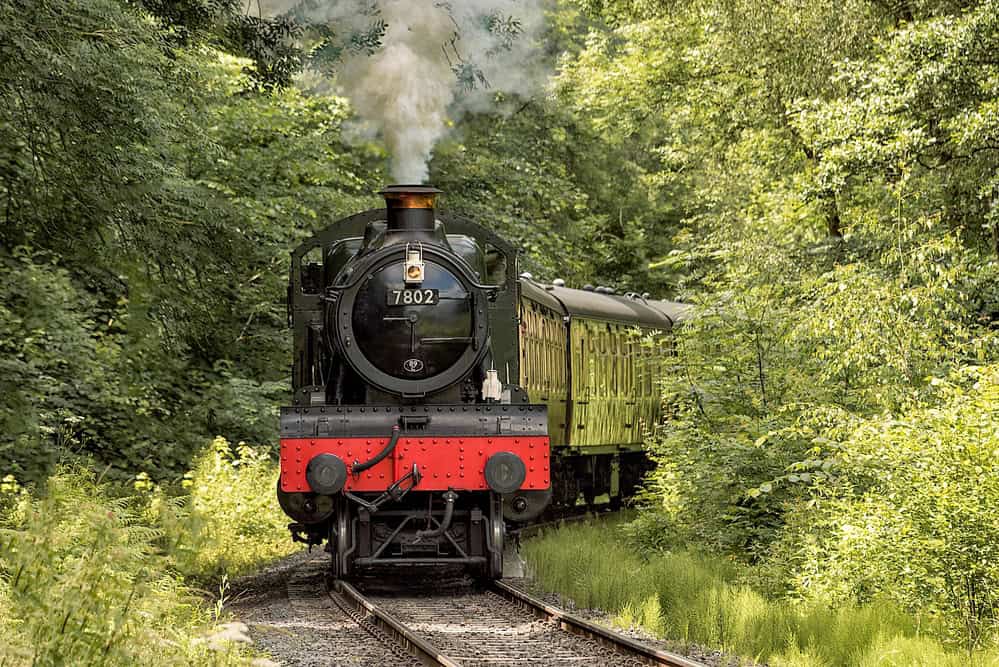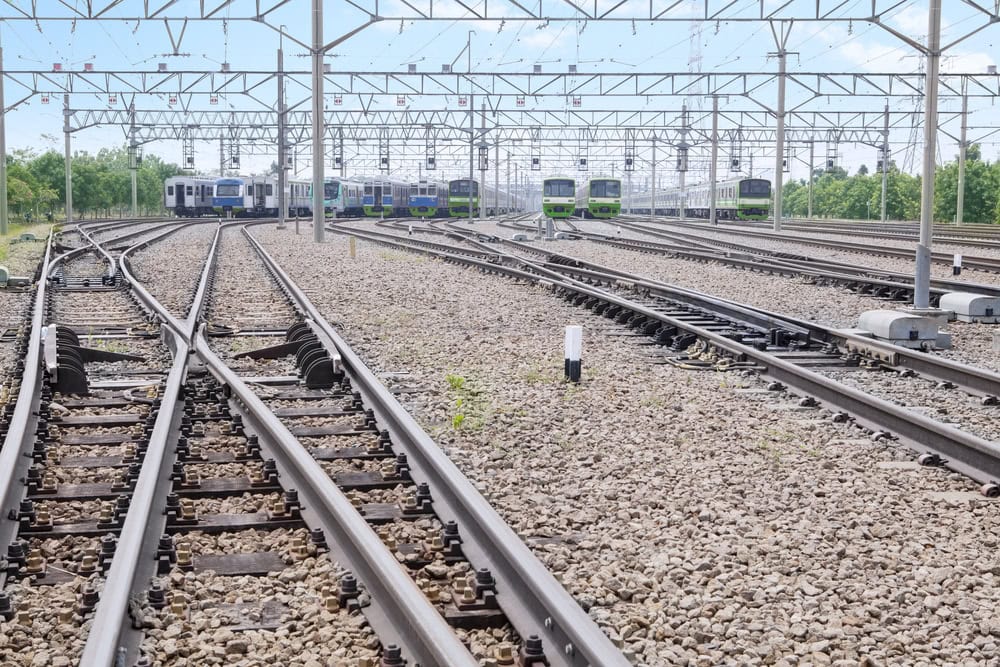Do trains still run on coal? Modern trains today do not directly run on coal. In the 1930s, trains began switching from coal-fired steam to diesel and electric power. But, most trains today use coal as an electric power source.
Let me explain.

Coal-fired steam locomotives were an integral component of the global railway network.
Without these trains, perhaps rail networks around the world wouldn’t have innovated further. These coal-powered trains are what paved the way for modern train engines today.
But, by the beginning of the 20th century, diesel-electric-powered technologies had overtaken.
From here, these engines became widespread. and continue to be the principal source of locomotive power today.
There are no more existing commercial trains that run directly on coal. But, most trains today are indirectly coal-powered because of Third Rail Supply.
Let’s talk more about it.
When Did Trains Stop Using Coal?
Trains in the United States started converting to diesel engines in 1949. The first railroad to do this was the Gulf, Mobile, and Ohio Railroad.
From here, more and more railroads followed suit. And by the 1980s, only very few railroads (mostly shortlines) used steam locomotives.
The Union Pacific 844, often renowned as the “Living Legend,” made its last journey in 2018 after it struck a person attempting to photograph the train. Shortly after this incident, the UP 844 finally ceased its operations.
Indirect Coal-Powered Trains
As mentioned earlier, trains do not run on coal directly, and steam trains are already phased out commercially.
Note that the keyword here is directly. The trains today do not have boilers that produce steam and run the train.
However, most trains are still indirectly coal-powered. This is mainly because of Rail Overhead Power Supply or Third Rail Supply.This refers to a technique of supplying electricity to a locomotive.
Rail Overhead Power Supply relies on thermal power plants that burn coal. In fact, coal makes up almost half of the energy around the world.
Why Don’t Modern Trains Run Directly On Coal? 2 Main Reasons

If that’s the case, why couldn’t trains retain coal instead of completely phasing them out? That’s because diesel and electric-powered trains are more efficient for these modern times.
1.Efficiency and Dependability
Diesel locomotives outperform steam trains in terms of speed and endurance. They use less fuel, too.
Moreover, they don’t have to stop as often to reload water and coal because they use oil-to-power generators. These engines also eliminated the need for a massive boiler to produce steam.
Furthermore, the upkeep of steam locomotives was also rather expensive. The boilers needed to undergo servicing once each month as required by law.
Each engine also needed a regular, comprehensive overhaul. This reduced their availability to 35%.
On the other hand, Diesel engines also require upkeep but have around 95% availability.
2. Environmental Impact
As we all know, burning coal, or any fossil fuel for that matter, has a significant environmental impact.
It can dangerously harm the environment in three main ways:
- Firstly, water-washing coal reduces its ash by around fifty percent. From here, sulfur and carbon gas are gradually released into the air. Taking water for use in power plants has a direct impact on marine life and puts aquatic species at risk.
- Reintroducing wastewater to the ecosystem is also harmful to animals. This is why it’s crucial that these businesses be subject to adequate regulation.
- And finally, burning coal can cause air pollution. Burning coal releases tons of harmful toxins into the air such as:
- Sulfur
- Nitrogen
- Greenhouse gasses
- Methane
- Carbon dioxide
Each of these pollutants has a significant role in accelerating global warming.
Do Trains Still Run On Coal? The Bottomline
Today’s modern trains do not directly run on coal anymore. Coal-powered steam locomotives were gradually phased out starting in the 1960s.
However, coal is still used indirectly to generate the energy that powers trains.
Also, if you’re lucky, you might get to jump on an old steam train ride. If you are in the area, check out The Durango & Silverton Narrow Gauge Railroad, it is incredible!
Safe travels.

